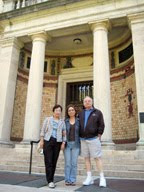 IT TAKES A CERTAIN amount of confidence to get through life. You have to believe in yourself and your abilities in order to make things happen - even the common, everyday stuff like driving, selecting fruit, raising children, etc.
IT TAKES A CERTAIN amount of confidence to get through life. You have to believe in yourself and your abilities in order to make things happen - even the common, everyday stuff like driving, selecting fruit, raising children, etc. When does confidence in oneself become arrogance? When does the politician (or plumber or accountant or teacher or whatever) go from being a person who believes in his or herself to a person who thinks they are the best person for the job? Nobody can do it better than I can, they believe. Is that arrogance?
 I just finished reading David Carr's memoir, The Night of The Gun. It was an interesting read - an alt weekly journalist who became a crackhead, got cleaned up, suffered from cancer, raised twin girls, made it bigtime, became an alcoholic and then cleaned up again. His gimmick in this exercise in self-indulgence is that he reported his life rather than writing things as he remembered them. Many of the exploits occurred while he was under the influence of something - his memories can't be trusted. So he found police, legal and medical records and then interviewed friends, family and colleagues from his drug-addled days.
I just finished reading David Carr's memoir, The Night of The Gun. It was an interesting read - an alt weekly journalist who became a crackhead, got cleaned up, suffered from cancer, raised twin girls, made it bigtime, became an alcoholic and then cleaned up again. His gimmick in this exercise in self-indulgence is that he reported his life rather than writing things as he remembered them. Many of the exploits occurred while he was under the influence of something - his memories can't be trusted. So he found police, legal and medical records and then interviewed friends, family and colleagues from his drug-addled days.Carr's tales are often redundant and many are stereotypical, like a bad crime drama. But it was a fun, easy read with amazing insight into the thought process of the addict.
The book, I think, is really about addiction in all it's forms. Carr clearly was addicted to drugs and alcohol. But I think he was (and maybe continues to be) really addicted to life, and his place in it.
Is it arrogant to write a memoir? Isn't the author sharing their personal history in order to educate, or at least entertain? Aren't they saying that their life has value to others?
I searched for the purpose of Carr writing his life's story. On one hand, there is a huge sense of narcissism and arrogance. On the other hand, it's an entertaining and informative tale from a guy whose work I have respected for some time. I learned a lot.
Ultimately, I think that Carr wrote the book because of his zest for life. He documented his existence because he fears it won't last long. His track record and his family history point to a short lifespan, and he wants people to realize that he didn't waste his time or talent.
I can appreciate that. It's something I think about all the time.















































